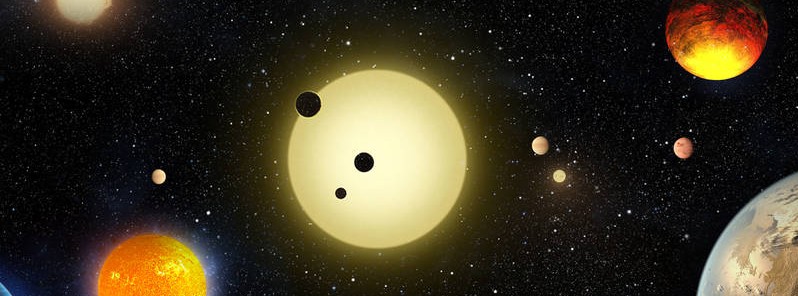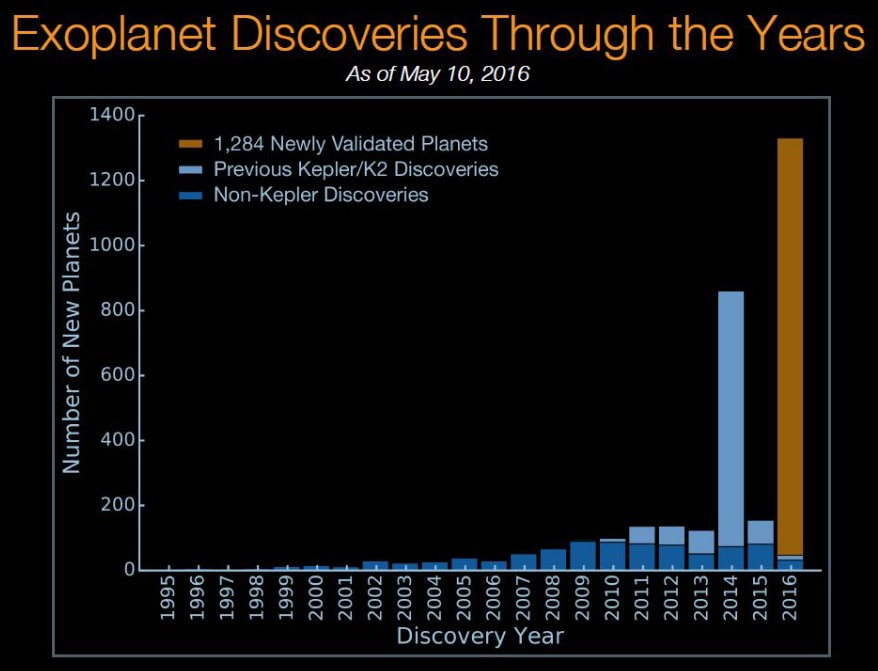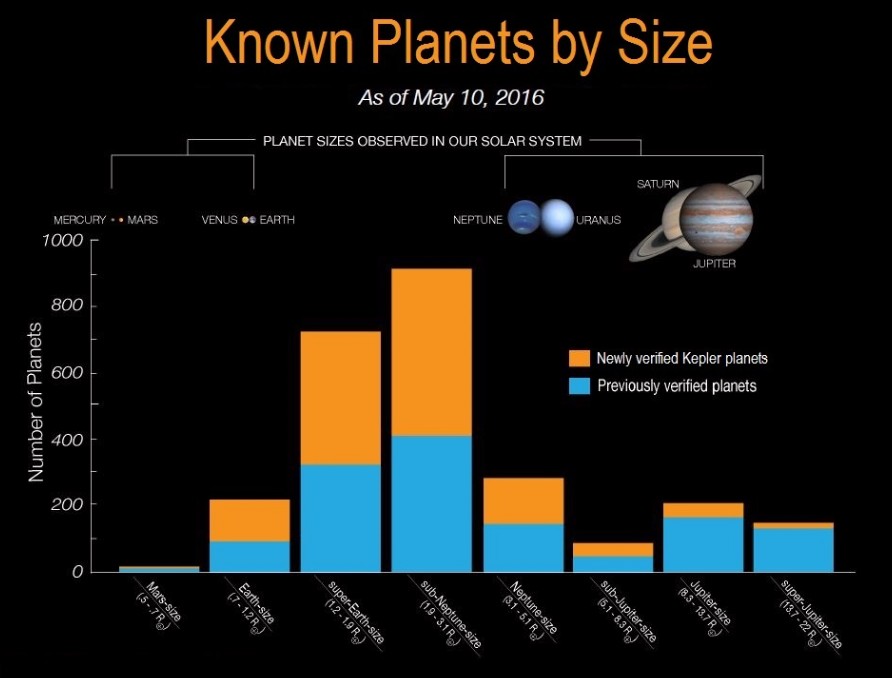Kepler mission announces largest collection of planets ever discovered

Kepler mission announced today it has verified 1 284 new planets – the single largest finding of planets to date.
"This announcement more than doubles the number of confirmed planets from Kepler and gives us hope that somewhere out there, around a star much like ours, we can eventually discover another Earth," said Ellen Stofan, chief scientist at NASA Headquarters in Washington.
Analysis was performed on the Kepler space telescope’s July 2015 planet candidate catalog, which identified 4 302 potential planets. For 1 284 of the candidates, the probability of being a planet is greater than 99% – the minimum required to earn the status of “planet.”
An additional 1 327 candidates are more likely than not to be actual planets, but they do not meet the 99% threshold and will require additional study. The remaining 707 are more likely to be some other astrophysical phenomena. This analysis also validated 984 candidates previously verified by other techniques.

The histogram shows the number of planet discoveries by year for more than the past two decades of the exoplanet search. The blue bar shows previous non-Kepler planet discoveries, the light blue bar shows previous Kepler planet discoveries, the orange bar displays the 1 284 new validated planets. Credits: NASA Ames/W. Stenzel; Princeton University/T. Morton

The histogram shows the number of planets by size for all known exoplanets. The blue bars on the histogram represent all previously verified exoplanets by size. The orange bars on the histogram represent Kepler's 1 284 newly validated planets announcement on May 10, 2016. Credits: NASA Ames/W. Stenzel
This latest announcement, however, is based on a statistical analysis method that can be applied to many planet candidates simultaneously. Timothy Morton, associate research scholar at Princeton University in New Jersey and lead author of the scientific paper published in The Astrophysical Journal, employed a technique to assign each Kepler candidate a planet-hood probability percentage – the first such automated computation on this scale, as previous statistical techniques focused only on sub-groups within the greater list of planet candidates identified by Kepler.
Kepler captures the discrete signals of distant planets – decreases in brightness that occur when planets pass in front of, or transit, their stars – much like the May 9 Mercury transit of our sun. Since the discovery of the first planets outside our solar system more than two decades ago, researchers have resorted to a laborious, one-by-one process of verifying suspected planets.

In the newly-validated batch of planets, nearly 550 could be rocky planets like Earth, based on their size. Nine of these orbit in their sun's habitable zone, which is the distance from a star where orbiting planets can have surface temperatures that allow liquid water to pool. With the addition of these nine, 21 exoplanets now are known to be members of this exclusive group.
Of the nearly 5 000 total planet candidates found to date, more than 3 200 now have been verified, and 2 325 of these were discovered by Kepler. Launched in March 2009, Kepler is the first NASA mission to find potentially habitable Earth-size planets. For four years, Kepler monitored 150 000 stars in a single patch of sky, measuring the tiny, telltale dip in the brightness of a star that can be produced by a transiting planet. In 2018, NASA’s Transiting Exoplanet Survey Satellite will use the same method to monitor 200 000 bright nearby stars and search for planets, focusing on Earth and Super-Earth-sized.
Source: NASA/Kepler
Featured image: This artist's concept depicts select planetary discoveries made to date by NASA's Kepler space telescope. Credits: NASA/W. Stenzel

Commenting rules and guidelines
We value the thoughts and opinions of our readers and welcome healthy discussions on our website. In order to maintain a respectful and positive community, we ask that all commenters follow these rules.